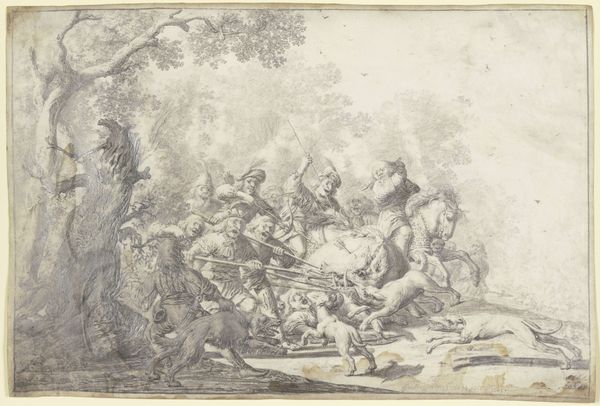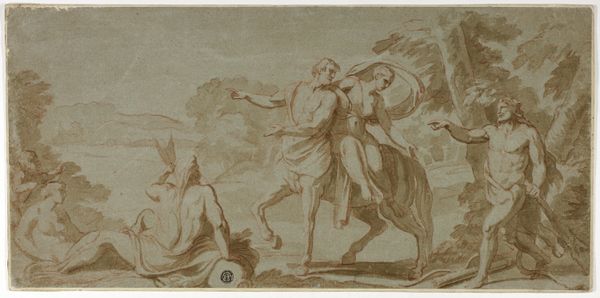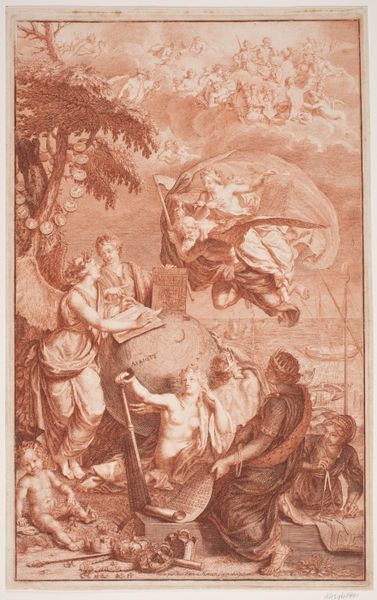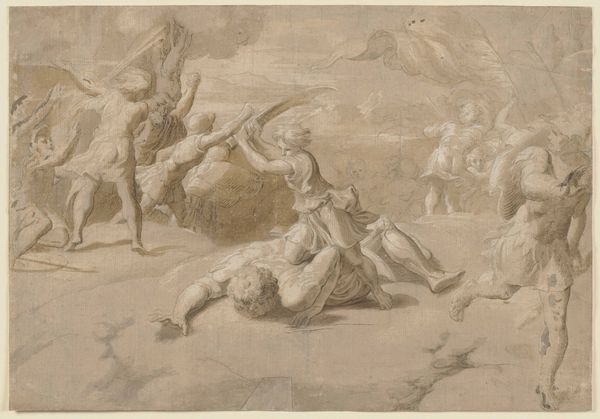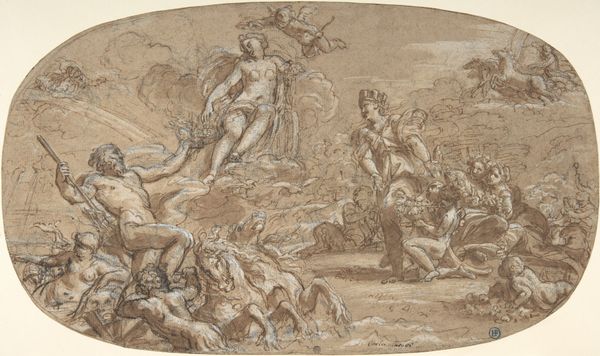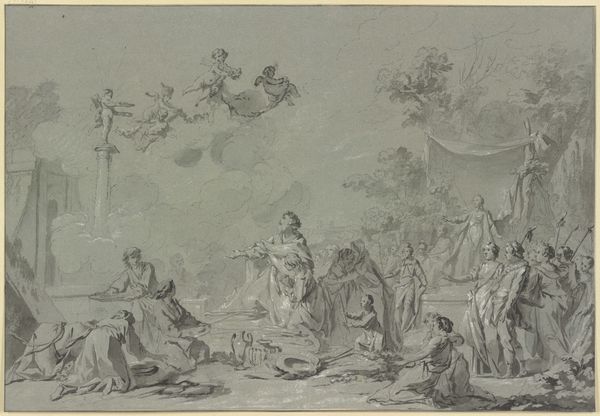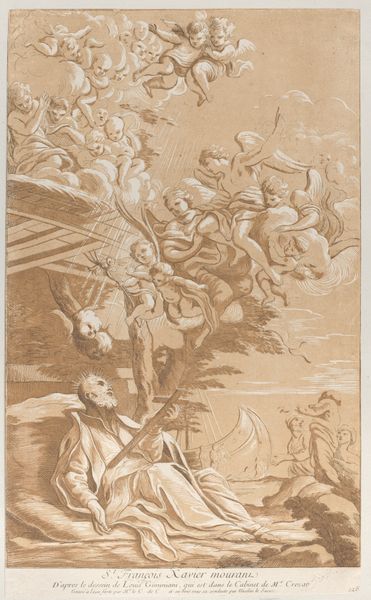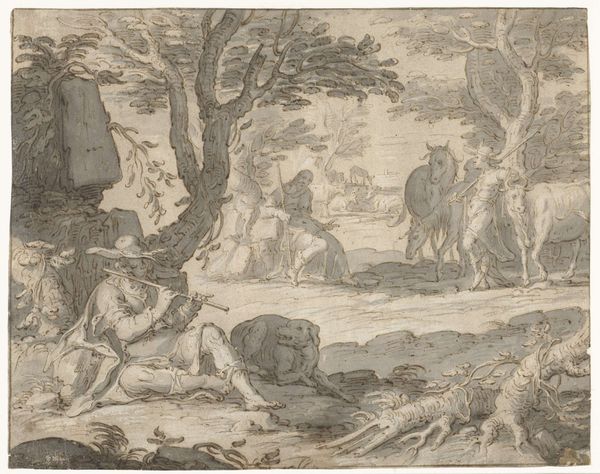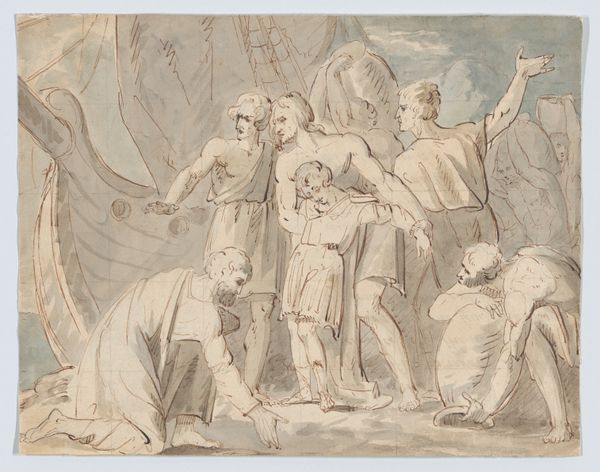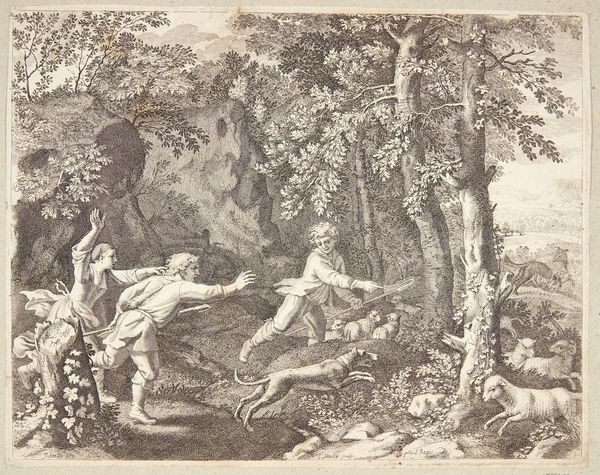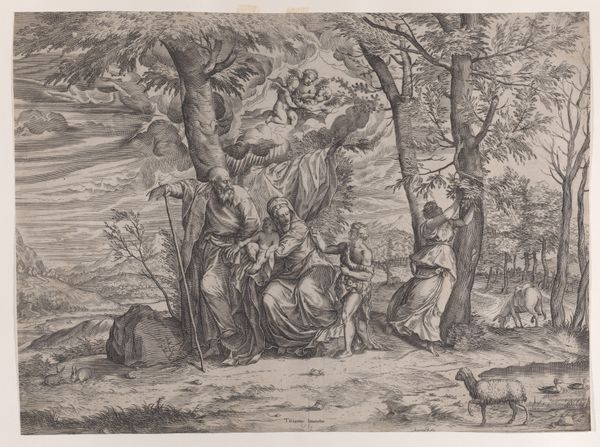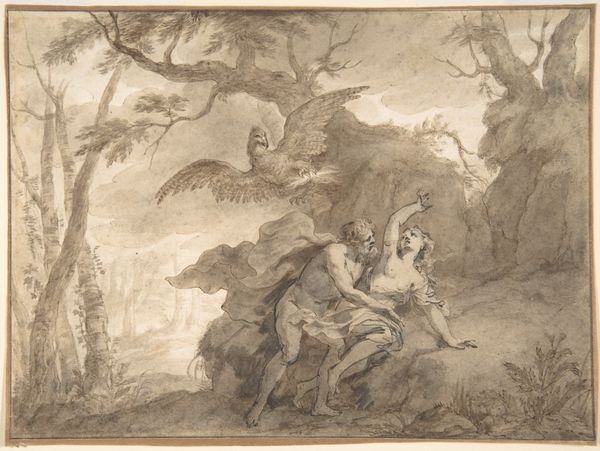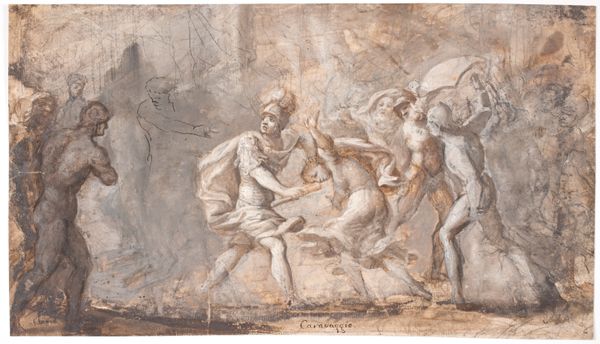
drawing, tempera, paper, ink
#
drawing
#
toned paper
#
tempera
#
landscape
#
figuration
#
paper
#
11_renaissance
#
ink
#
history-painting
#
watercolor
Dimensions: 276 mm (height) x 430 mm (width) (bladmaal)
Editor: Here we have "The Baptism of Christ," a drawing in tempera, ink, and watercolor on toned paper, dating roughly from 1548 to 1628. I'm immediately drawn to the dynamism of the composition, even within the limited color palette. What strikes you most about the work's visual elements? Curator: The dynamism is indeed crucial. Consider how the artist uses line to create a sense of movement and flow. The lines aren't just descriptive; they are actively directing our eye through the composition. Notice how the diagonal lines created by the figures lead us from the left foreground up to the descending dove. Also, observe how the negative space is shaped and used in this drawing. Editor: I see that now. The shapes formed around the figures almost feel like active participants. Does the limited use of color also contribute to this dynamic, by unifying the composition? Curator: Precisely. The restricted tonal range forces us to focus on form and line. The subtle variations in tone are carefully calibrated to model the figures and suggest depth, rather than being used for decorative purposes. Ask yourself, what would be lost if vibrant color were introduced? Editor: I suppose it might distract from the almost ethereal quality the drawing currently possesses. It encourages closer observation of the lines themselves. Curator: Exactly. The artist's technical skill is evident in their ability to convey form and emotion through such economical means. This creates a compelling tension between the scene's spiritual content and the formal elements of its representation. How do these combined observations affect your appreciation of the work now? Editor: I appreciate the intentionality behind what might initially seem like a simple drawing. By restricting color and focusing on line, the artist achieves a powerful sense of movement and emphasizes the formal composition. Curator: Agreed. Examining how an artist manipulates formal elements allows us to understand their choices and, subsequently, deepen our engagement with the artwork.
Comments
No comments
Be the first to comment and join the conversation on the ultimate creative platform.
